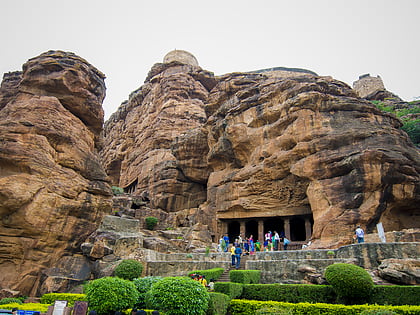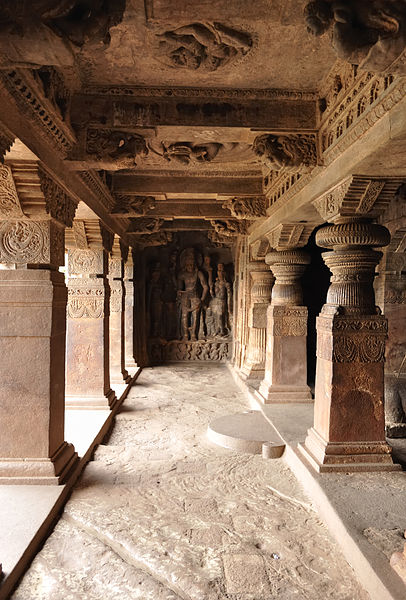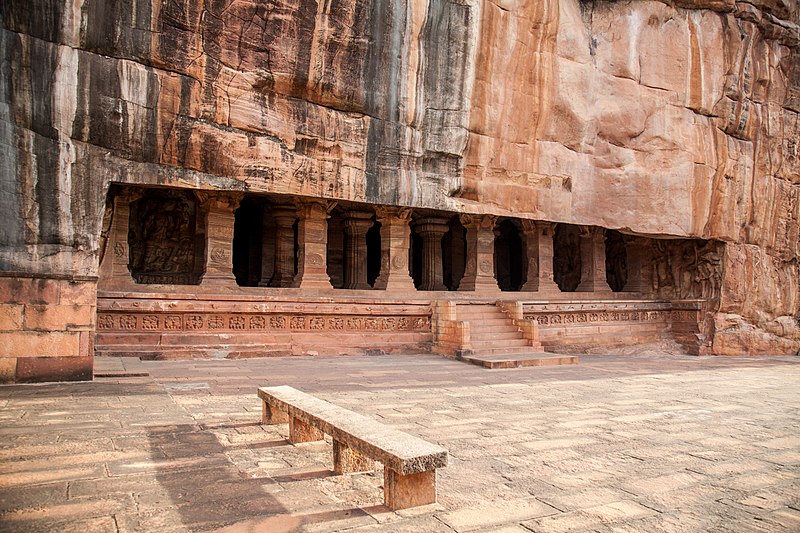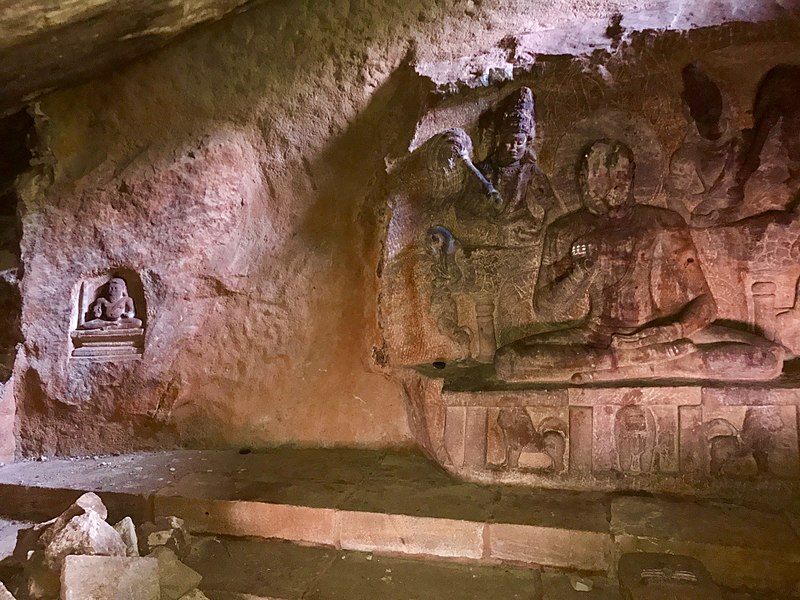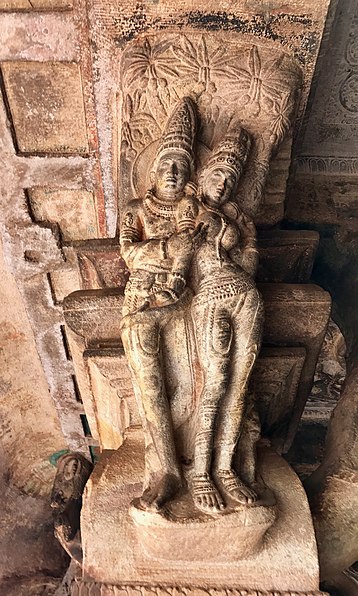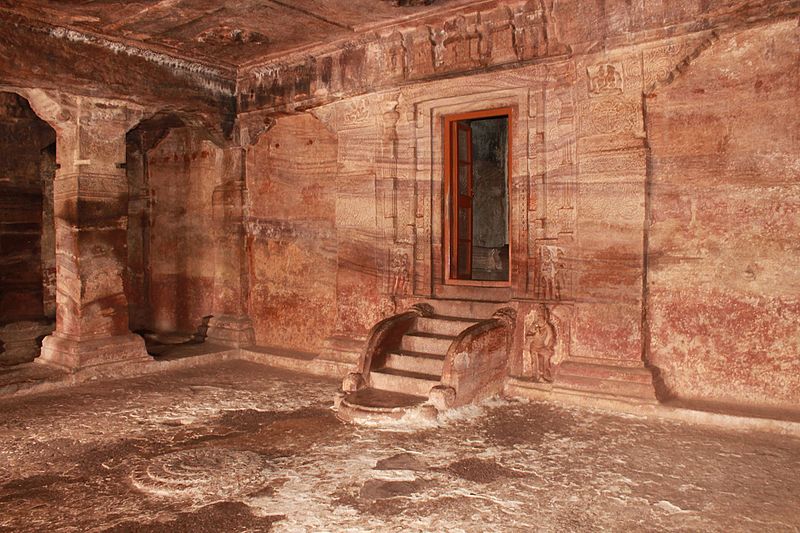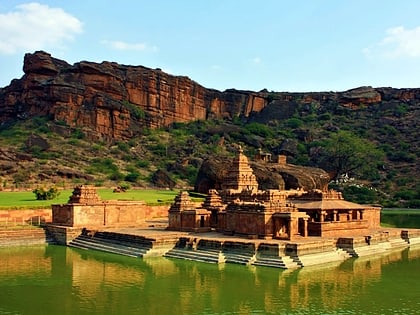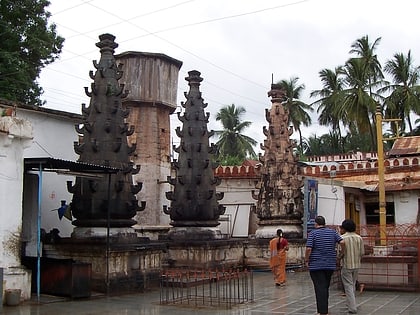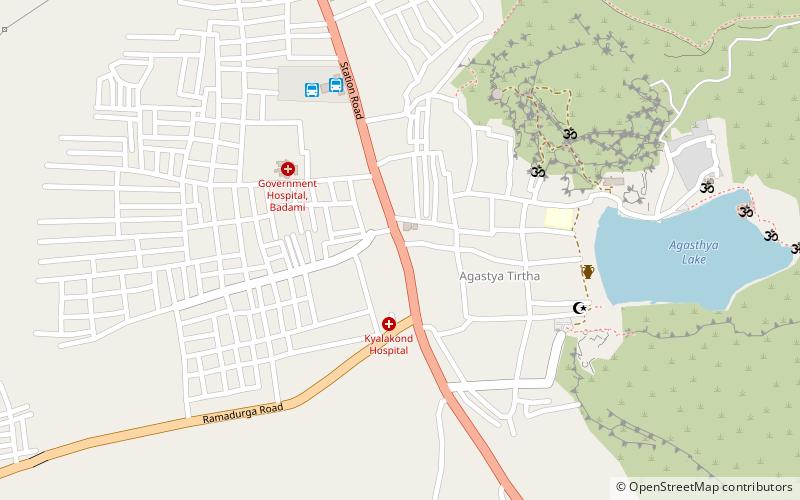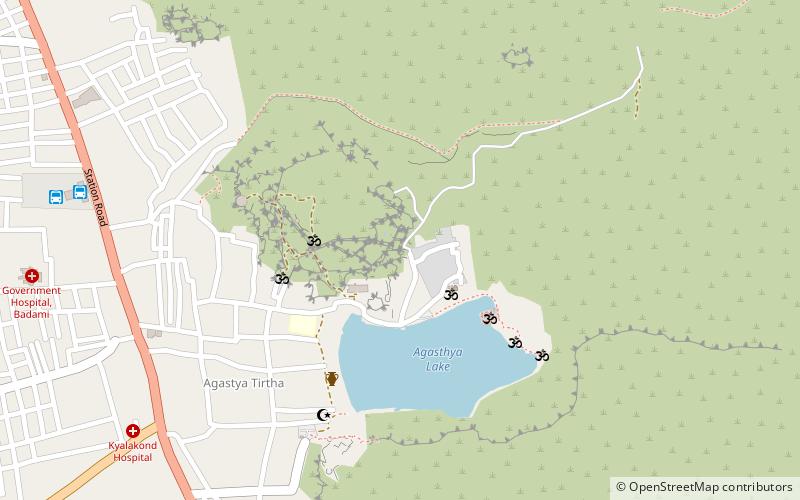Badami cave temples, Badami
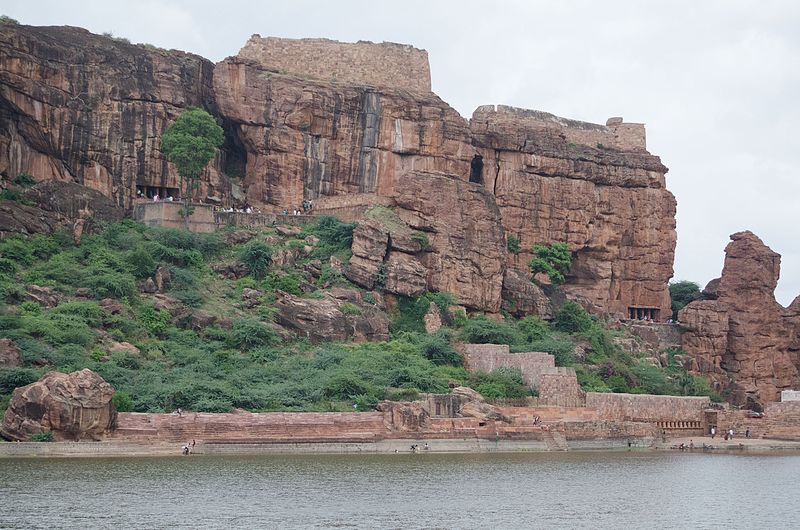
Facts and practical information
Nestled in the rugged sandstone outcrops of Karnataka, India, the Badami cave temples stand as a magnificent testament to ancient Indian rock-cut architecture. These caves, hewn out of solid rock, date back to the 6th century and were created under the patronage of the Chalukya dynasty. The site comprises four primary caves, each offering a unique glimpse into the religious art and culture of the period.
The first cave is dedicated to the Hindu god Shiva, showcasing an awe-inspiring 18-armed Nataraja striking 81 dance poses. As you ascend to the second cave, you are greeted by the myriad forms of Vishnu, including his Trivikrama and Varaha avatars. The third cave, the largest and most ornate, is also a tribute to Vishnu, adorned with intricate carvings and majestic columns. The fourth cave represents Jain traditions, featuring a statue of Mahavira and other Tirthankaras.
Visitors to the Badami cave temples can marvel at the fusion of architectural styles, with elements of South Indian Dravidian architecture and the Northern Nagara style. The caves are adorned with a rich tapestry of sculptures and relief panels, depicting scenes from Hindu mythology, and are a testament to the skill and artistry of ancient sculptors.
To fully appreciate the Badami cave temples, tourists should allocate a few hours for exploration. Comfortable footwear is advisable as there are steep steps to navigate. Photography is permitted, allowing visitors to capture the grandeur of these historical marvels.
Badami cave temples – popular in the area (distance from the attraction)
Nearby attractions include: Bhutanatha group of temples, Banashankari Temple, Mahakuta group of temples, Khyad.
